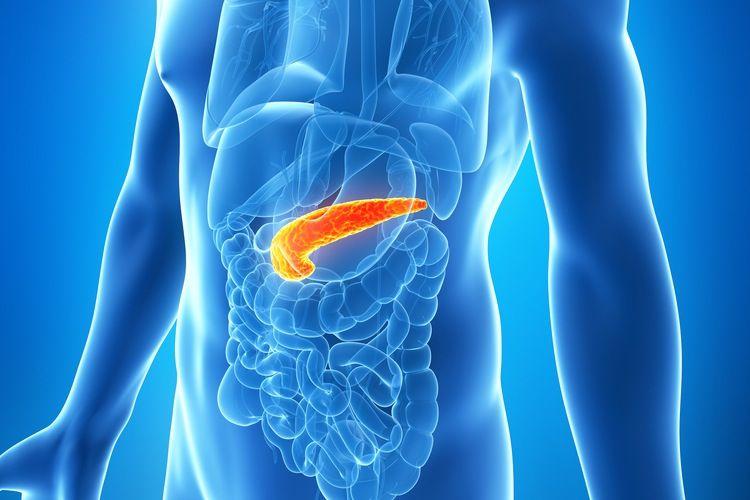Introduction
The gallbladder is a small, pear-shaped organ located beneath the liver. It plays a crucial role in the digestive system by storing and concentrating bile, a substance produced by the liver that helps break down fats during the digestion process. The function of the gallbladder is often overlooked, but it serves a vital purpose in ensuring efficient digestion and nutrient absorption. In this article, we will explore the various functions of the gallbladder and its importance for overall digestive health.
The Gallbladder’s Anatomy
Let’s first examine the anatomy of the gallbladder before exploring its activities. The gallbladder is a tiny sac-like organ that is roughly 7–10 centimeters in length and 4 centimeters wide. It is hidden beneath the liver on the right side of the belly. A network of channels, including the cystic duct and the common bile duct, connects the gallbladder to the liver and the small intestine.
Production and Storage of Bile
Bile storage and concentration is one of the gallbladder’s main jobs. The liver produces bile, a greenish-yellow liquid that is released into the gallbladder for storage. When we eat, especially fatty meals, the gallbladder contracts, and the common bile duct allows concentrated bile to pass into the small intestine. Bile aids in the breakdown of fats into tiny droplets so that the digestive system’s enzymes can further break them down for absorption.
Helping with digestion
The gallbladder plays a critical part in digestion. The gallbladder releases bile when fats enter the small intestine, which helps emulsify and digest lipids. Fat molecules are broken down into smaller particles in bile, increasing the surface area of the fat molecules. The emulsification process makes it easier for the lipase enzymes to access the fats and break them down into fatty acids and glycerol. It would be substantially more difficult to digest and absorb fats without the stored bile in the gallbladder.
Controlling Bile Release
Bile is stored in the gallbladder, which also controls how much of it is released into the small intestine. The small intestine’s cells release the hormone cholecystokinin (CCK) after we eat a fatty meal. The gallbladder contracts in response to the CCK signal, releasing any accumulated bile. As a result of the gallbladder’s capacity to store and release bile in reaction to the presence of fats, the digestive system can handle dietary fats effectively and efficiently.
Bile Build-Up Prevention
The gallbladder not only stores bile but also guards against an excessive buildup. Whether or whether we have recently eaten does not affect how much bile the liver generates. There might be too much bile in the digestive tract if the bile were to flow into the small intestine continuously. Bile can build up in the gallbladder until it is required for digestion when it is then used as a reservoir for storage. This system guarantees the availability of bile when needed and stops its unnecessary loss.
Play a Part in Nutrient Absorption
The absorption of fat-soluble vitamins such as vitamins A, D, E, and K is greatly aided by the gallbladder. For these vitamins to be absorbed, fat is necessary. Bile’s facilitation of emulsification of lipids increases the surface area available for absorption in the small intestine. As a result, both the breakdown products of lipids and fat-soluble vitamins can be effectively absorbed. These vital vitamins would be less absorbed if the gallbladder didn’t do its role.
Anti-Bacterial Overgrowth Protection
In addition to helping with fat digestion, bile also guards against bacterial overgrowth in the small intestine. Bile salts, which are present in bile, are antibacterial. These bile salts support a healthy balance of gut flora by limiting the growth of bacteria in the small intestine. This equilibrium can be upset by the loss of gallbladder function, which may also result in bacterial overgrowth and digestive problems such as bloating, gas, and diarrhea.
FAQs
Is it possible to live without a gallbladder?
Yes, it is possible to live without a gallbladder. The gallbladder is not an essential organ, and the liver can still produce bile, which will be secreted directly into the small intestine. However, without a gallbladder, the concentration and regulation of bile release are affected, which can lead to changes in digestion and fat absorption.
What causes gallbladder problems?
Gallbladder problems can be caused by various factors. The most common causes include gallstones, which are hardened deposits in the gallbladder; inflammation of the gallbladder, known as cholecystitis; and gallbladder polyps or tumors. Other risk factors include obesity, a high-fat diet, rapid weight loss, and certain medical conditions.
How are gallbladder problems diagnosed?
Gallbladder problems are typically diagnosed through a combination of medical history, physical examination, and diagnostic tests. These tests may include ultrasound imaging, blood tests to check for signs of infection or inflammation, and occasionally, more advanced imaging techniques such as MRI or CT scans.
What are the symptoms of gallbladder problems?
Gallbladder problems can cause various symptoms, including abdominal pain, particularly in the upper right abdomen; nausea and vomiting; bloating and gas; indigestion; and changes in bowel movements, such as diarrhea or pale-colored stools. If you experience any of these symptoms, it is important to consult a healthcare professional for an accurate diagnosis.
Can gallbladder problems be treated without surgery?
In some cases, gallbladder problems can be managed without surgery. This may involve dietary modifications, such as reducing fat intake, avoiding trigger foods, and eating smaller, more frequent meals. Medications may also be prescribed to help dissolve gallstones or alleviate symptoms. However, if the gallbladder problems are severe or recurrent, surgical removal of the gallbladder, known as cholecystectomy, may be necessary.
What is the recovery like after gallbladder surgery?
Recovery after gallbladder surgery is generally swift, with most individuals able to resume normal activities within a week or two. Laparoscopic cholecystectomy, the most common surgical approach, involves smaller incisions and typically results in a quicker recovery compared to open surgery. Following surgery, your healthcare provider will provide specific instructions regarding diet, activity, and pain management during the recovery period.
Conclusion
The gallbladder plays a crucial role in the digestive system, storing and concentrating bile to aid in the digestion and absorption of fats. Its function extends beyond fat metabolism, encompassing the regulation of bile release, prevention of bile build-up, nutrient absorption, and protection against bacterial overgrowth. While it is possible to live without a gallbladder, its absence can lead to changes in digestion and fat absorption. If you experience symptoms related to gallbladder problems, it is important to seek medical advice for an accurate diagnosis and appropriate management.


